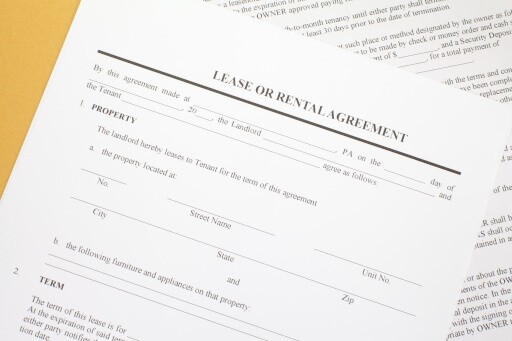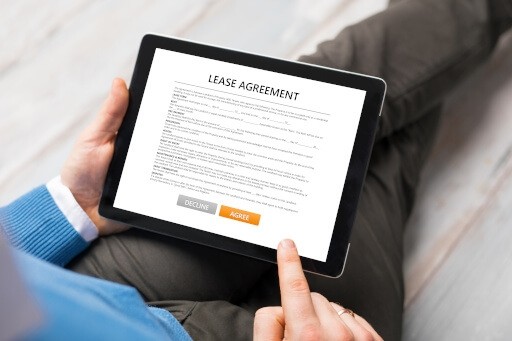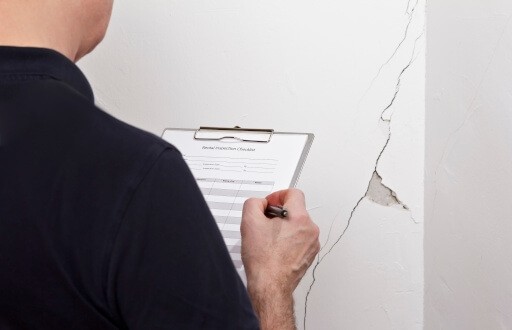If a rental applicant doesn’t meet the qualification to rent a property, the landlord or property manager may require them to find a cosigner or guarantor before approving their application. Whether the applicant has insufficient income, bad or no credit, or lacks steady employment, requiring a cosigner or guarantor to sign the lease can be a compromise for the landlord and the applicant. The applicant gets approved and is welcomed into a new home, and the landlord feels comfortable accepting a new tenant and filling their vacancy, but what responsibility does a cosigner or guarantor have in this scenario?
What Is a Cosigner/Guarantor?
Although the terms are used interchangeably, cosigners and guarantors are not the same. A cosigner and a guarantor are both individuals who choose to take on the financial responsibility of the rental property should the tenant default on rent by signing the lease with the tenant. The key difference is that a cosigner is essentially another tenant who has the right to occupy the rental. Whether the applicant has a cosigner or a guarantor, both individuals are responsible for paying rent when the tenant fails to do so themselves.
When Can a Landlord Contact a Cosigner/Guarantor?
The specific time frame and details about rent collection with the tenant and third party, the cosigner or guarantor, should be outlined in the lease agreement. Before you (the landlord or property manager), the tenant, and the cosigner sign the lease, make sure the lease details the specifics of the situation, including when and how you will contact the cosigner and how much time they have to provide funds. Common situations that would require you to contact the cosigner include unpaid rent, unpaid additional fees, property damage, or legal costs.
The lease should outline the correct timeframe for each situation, detailing how soon you can contact the cosigner to collect payment. For instance, if the tenant has not paid rent on the first of the month, your first step would be to contact the tenant and inform them that their rent is late and they need to pay it as soon as possible. If the tenant still doesn’t pay rent, it’s time to contact the cosigner or guarantor to secure the rent payment. Whether you contact the cosigner immediately or after a certain period of time is up to you and the lease agreement.
Should a cosigner be copied on all communication?
How you choose to handle communicating with the tenant about nonpayment of rent is up to you and your local laws. If you want to notify the cosigner or guarantor of the issue by copying them on the message, you can do so, as long as you’re following the regulations you set up for this situation in the lease.
How to Contact a Cosigner/Guarantor
The details about how and when you contact the cosigner or guarantor will be outlined in your lease agreement. Whether you’ve settled on a formal letter in the mail, email, or a phone call, it’s your right to contact the cosigner or guarantor for payment. The cosigner is aware of their responsibility to pay rent and additional bills, so they should be reachable.
Does the tenant need to be alerted when the cosigner or guarantor is contacted?
When you initially contact the tenant to inform them their rent is late, you can remind them that if they do not pay, you will have to involve the cosigner or guarantor. It’s up to you if you choose to contact the tenant again to let them know you have informed their cosigner of their nonpayment of rent, but it’s likely that the cosigner will contact the tenant themselves. After all, the purpose of having a cosigner or a guarantor is to have a back-up plan. If you can’t get the tenant to pay rent, the cosigner or guarantor may be able to get them to do so, and if not, the cosigner will be responsible for payment. Either way, you will receive a rent payment.
Timeline for Cosigner/Guarantor Solution
You can create a timeline detailing how long a cosigner or guarantor has to make things right, as long as it follows your state guidelines on the matter. Payment can either be due immediately after the tenant defaults on payment or you can give them a certain period of time to pay the bill or address the issue.
Can a cosigner break the lease after paying the debt?
Because the cosigner or guarantor agreed to pay rent and any other fees for the tenant during the lease period, they cannot get out of the lease. They are legally bound to the terms of the lease agreement, and it wouldn’t be in the landlord’s best interest to allow a cosigner to back out of the lease. The only people that can break the lease are the tenant and the landlord. If the tenant chooses to break the lease after not paying rent, they can do so, but there will be repercussions detailed in the lease. For instance, the tenant (and the cosigner or guarantor) may be responsible for paying one to two months’ rent for ending the lease early (as well as any rent or fees left unpaid that exceed the security deposit). The landlord has the right to end the lease in certain situations, so be sure to check your state laws before making any decisions.
What Happens If the Cosigner/Guarantor Can’t or Won’t Help?
If the cosigner or guarantor has not addressed the issue of nonpayment and has yet to pay their debt, it’s time to take next steps. You can provide the cosigner with written notice about their failure to pay and allow them to fix the issue before taking any other legal action.
If there is still no contact or effort made by the cosigner, you can file a lawsuit for the money owed or send the bill to a collection agency. The cosigner or guarantor will then have to go through the court system or collection agency to remedy the situation, rather than handling it with you, the landlord. Because neither the tenant nor the cosigner/guarantor is willing to pay rent, it’s within your rights to begin the eviction process, but before you do so, check your state laws to ensure you are following the correct procedure for evicting your tenant.
Review Your Lease Agreement
There will always be a risk when accepting an applicant who requires a cosigner or a guarantor to meet your requirements. Although accepting cosigners gives you a wider tenant pool, it could cause financial issues for you down the road. It’s always in your best interest as the landlord to screen the cosigner or guarantor in the same way you would the tenant. Apartments.com makes it easy to screen tenants, get the information you need, and find a qualified renter fast. Unlike our competitors, who use various third-party resources to collect information, we partner with TransUnion to provide you with screening reports for evictions, credit, and criminal history. Another feature you’ll find only on Apartments.com is support for co-signers, guarantors, and co-applicants.Keep in mind that although a tenant who needs a cosigner may be more of a risk, it’s not always a reason to deny their application. This is the time to take caution and review your lease clauses on cosigners. Make sure your lease agreement covers the details and timeframe about nonpayment of rent and other fees to ensure you are covered if things don’t go as planned with the tenant, meaning they default on payment and you’re forced to turn to the cosigner or guarantor.











